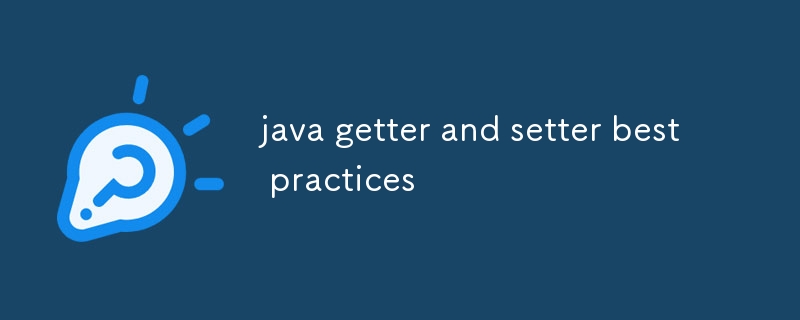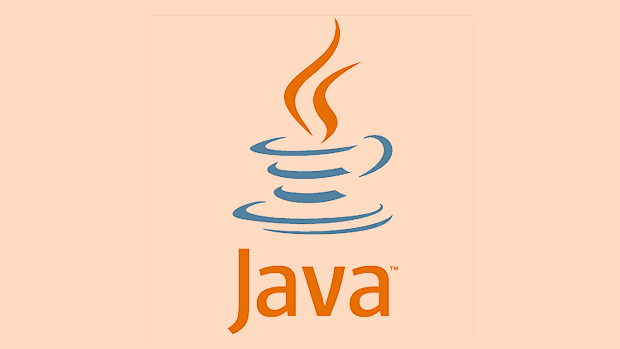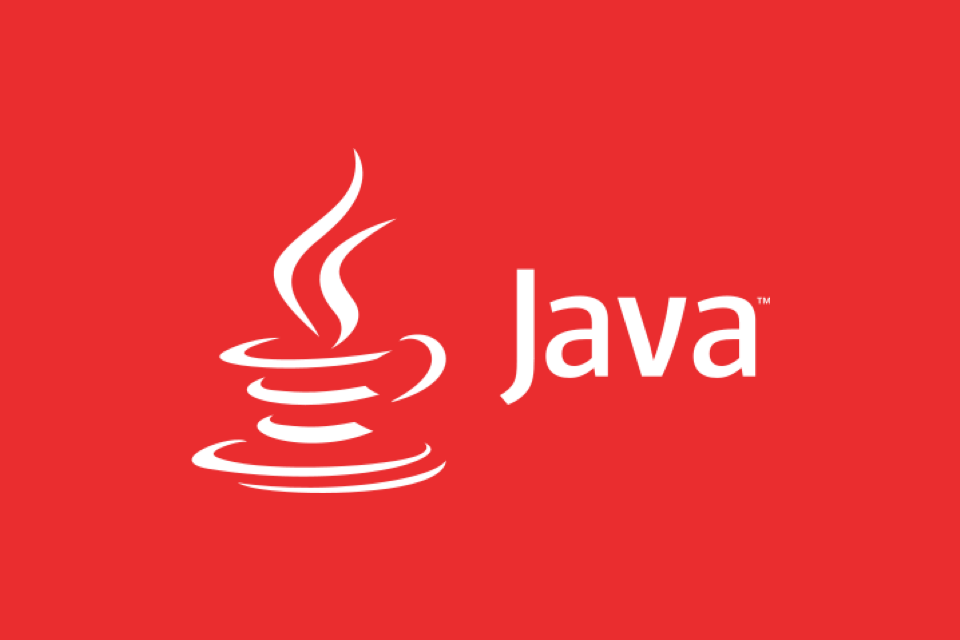In Java development, the rational use of getter and setter methods can improve the maintainability and readability of the code. 1. The naming should follow the JavaBean specification. Getters start with get, boolean type can be started with is, and setters start with set, which is convenient for IDE and framework identification; 2. Avoid complex logic in the method, which is only used to obtain or set values, and business logic should be placed in constructors or special methods; 3. Decide whether to expose getter/setter according to requirements. Non-essential fields should not be exposed to the public, maintaining the encapsulation and immutability of the class; 4. After using the IDE automatically generated, it is necessary to check whether adjustments need to be made, such as adding logic, ignoring fields or setting read-only attributes; 5. Lombok can simplify code but should not be abused. It is recommended to be used for simple DTO rather than core business classes to ensure that the code is clear and controllable.

In Java development, although getter and setter methods seem simple, they can improve the maintainability and readability of the code if used well. The key is to follow some basic norms and best practices, rather than just writing two methods and getting it done.

1. Keep the naming consistent and comply with JavaBean specifications
Java has conventional naming rules, getters and setters should strictly follow the naming specifications of JavaBeans:
- The getter method name begins with
get, followed by the capitalized letter of the attribute name (such asgetName()) - Properties of type boolean can start with
is(such asisActive()) - The setter method name begins with
set(such assetName(String name))
Doing this allows IDEs and frameworks (such as Spring and Jackson) to correctly identify attributes to avoid problems with reflection or serialization.

2. Don't make complicated logic in getter/setter
The responsibility of getter and setter should be to "simplely get or set values". If you do business logic in it, such as format conversion, verification, database calls, etc., it may violate the principle of single responsibility.
For example, the following writing method is inappropriate:

public void setName(String name) {
if (name == null || name.trim().isEmpty()) {
throw new IllegalArgumentException("Name can't be empty");
}
this.name = name;
}This type of verification is more suitable for constructors or specialized business methods rather than setters. Otherwise, unexpected exceptions are likely to occur where the setter is called.
3. Decide whether to expose getter/setter based on needs
Not every property requires a getter and a setter. Some properties are only used inside the class, or should be modified indirectly through business methods.
for example:
private String tempCache;
Such temporary cache fields should not be exposed to external access or modification.
In addition, some fields are only set once during initialization, and can only provide getters, not setters, and maintain immutability.
4. Use the IDE to generate automatically, but you must be able to determine whether it needs to be modified.
Now most IDEs (such as IntelliJ, Eclipse) support automatic generation of getters/setters, which is very convenient. However, after generation, you still need to check:
- Is it necessary to add additional logic (such as format conversion)
- Is it necessary to ignore certain fields
- Whether there are fields should be set to final, only getters are left
For example, a read-only field:
private final String id;
public String getId() {
return id;
}There is no need to generate a setter at this time.
5. Lombok can simplify code, but don't abuse it
Lombok's @Getter and @Setter annotations do reduce boilerplate code, but it also brings some problems:
- The code readability is reduced, and others cannot see the actual method structure
- If a field should not be exposed, it is easy to add it incorrectly because of the annotation
- Some frameworks may have problems when debugging or serializing
It is recommended to use Lombok in a simple DTO or internal model, but in the core business class, handwritten getter/setter is more clear and controllable.
Basically that's it. Getters and setters may seem simple, but using them correctly can avoid many potential problems. Don't underestimate these details, they have a great impact on large-scale projects.
The above is the detailed content of java getter and setter best practices. For more information, please follow other related articles on the PHP Chinese website!

Hot AI Tools

Undress AI Tool
Undress images for free

Undresser.AI Undress
AI-powered app for creating realistic nude photos

AI Clothes Remover
Online AI tool for removing clothes from photos.

Clothoff.io
AI clothes remover

Video Face Swap
Swap faces in any video effortlessly with our completely free AI face swap tool!

Hot Article

Hot Tools

Notepad++7.3.1
Easy-to-use and free code editor

SublimeText3 Chinese version
Chinese version, very easy to use

Zend Studio 13.0.1
Powerful PHP integrated development environment

Dreamweaver CS6
Visual web development tools

SublimeText3 Mac version
God-level code editing software (SublimeText3)

Hot Topics
 Differences Between Callable and Runnable in Java
Jul 04, 2025 am 02:50 AM
Differences Between Callable and Runnable in Java
Jul 04, 2025 am 02:50 AM
There are three main differences between Callable and Runnable in Java. First, the callable method can return the result, suitable for tasks that need to return values, such as Callable; while the run() method of Runnable has no return value, suitable for tasks that do not need to return, such as logging. Second, Callable allows to throw checked exceptions to facilitate error transmission; while Runnable must handle exceptions internally. Third, Runnable can be directly passed to Thread or ExecutorService, while Callable can only be submitted to ExecutorService and returns the Future object to
 Asynchronous Programming Techniques in Modern Java
Jul 07, 2025 am 02:24 AM
Asynchronous Programming Techniques in Modern Java
Jul 07, 2025 am 02:24 AM
Java supports asynchronous programming including the use of CompletableFuture, responsive streams (such as ProjectReactor), and virtual threads in Java19. 1.CompletableFuture improves code readability and maintenance through chain calls, and supports task orchestration and exception handling; 2. ProjectReactor provides Mono and Flux types to implement responsive programming, with backpressure mechanism and rich operators; 3. Virtual threads reduce concurrency costs, are suitable for I/O-intensive tasks, and are lighter and easier to expand than traditional platform threads. Each method has applicable scenarios, and appropriate tools should be selected according to your needs and mixed models should be avoided to maintain simplicity
 Understanding Java NIO and Its Advantages
Jul 08, 2025 am 02:55 AM
Understanding Java NIO and Its Advantages
Jul 08, 2025 am 02:55 AM
JavaNIO is a new IOAPI introduced by Java 1.4. 1) is aimed at buffers and channels, 2) contains Buffer, Channel and Selector core components, 3) supports non-blocking mode, and 4) handles concurrent connections more efficiently than traditional IO. Its advantages are reflected in: 1) Non-blocking IO reduces thread overhead, 2) Buffer improves data transmission efficiency, 3) Selector realizes multiplexing, and 4) Memory mapping speeds up file reading and writing. Note when using: 1) The flip/clear operation of the Buffer is easy to be confused, 2) Incomplete data needs to be processed manually without blocking, 3) Selector registration must be canceled in time, 4) NIO is not suitable for all scenarios.
 Best Practices for Using Enums in Java
Jul 07, 2025 am 02:35 AM
Best Practices for Using Enums in Java
Jul 07, 2025 am 02:35 AM
In Java, enums are suitable for representing fixed constant sets. Best practices include: 1. Use enum to represent fixed state or options to improve type safety and readability; 2. Add properties and methods to enums to enhance flexibility, such as defining fields, constructors, helper methods, etc.; 3. Use EnumMap and EnumSet to improve performance and type safety because they are more efficient based on arrays; 4. Avoid abuse of enums, such as dynamic values, frequent changes or complex logic scenarios, which should be replaced by other methods. Correct use of enum can improve code quality and reduce errors, but you need to pay attention to its applicable boundaries.
 How Java ClassLoaders Work Internally
Jul 06, 2025 am 02:53 AM
How Java ClassLoaders Work Internally
Jul 06, 2025 am 02:53 AM
Java's class loading mechanism is implemented through ClassLoader, and its core workflow is divided into three stages: loading, linking and initialization. During the loading phase, ClassLoader dynamically reads the bytecode of the class and creates Class objects; links include verifying the correctness of the class, allocating memory to static variables, and parsing symbol references; initialization performs static code blocks and static variable assignments. Class loading adopts the parent delegation model, and prioritizes the parent class loader to find classes, and try Bootstrap, Extension, and ApplicationClassLoader in turn to ensure that the core class library is safe and avoids duplicate loading. Developers can customize ClassLoader, such as URLClassL
 Exploring Different Synchronization Mechanisms in Java
Jul 04, 2025 am 02:53 AM
Exploring Different Synchronization Mechanisms in Java
Jul 04, 2025 am 02:53 AM
Javaprovidesmultiplesynchronizationtoolsforthreadsafety.1.synchronizedblocksensuremutualexclusionbylockingmethodsorspecificcodesections.2.ReentrantLockoffersadvancedcontrol,includingtryLockandfairnesspolicies.3.Conditionvariablesallowthreadstowaitfor
 Handling Common Java Exceptions Effectively
Jul 05, 2025 am 02:35 AM
Handling Common Java Exceptions Effectively
Jul 05, 2025 am 02:35 AM
The key to Java exception handling is to distinguish between checked and unchecked exceptions and use try-catch, finally and logging reasonably. 1. Checked exceptions such as IOException need to be forced to handle, which is suitable for expected external problems; 2. Unchecked exceptions such as NullPointerException are usually caused by program logic errors and are runtime errors; 3. When catching exceptions, they should be specific and clear to avoid general capture of Exception; 4. It is recommended to use try-with-resources to automatically close resources to reduce manual cleaning of code; 5. In exception handling, detailed information should be recorded in combination with log frameworks to facilitate later
 How does a HashMap work internally in Java?
Jul 15, 2025 am 03:10 AM
How does a HashMap work internally in Java?
Jul 15, 2025 am 03:10 AM
HashMap implements key-value pair storage through hash tables in Java, and its core lies in quickly positioning data locations. 1. First use the hashCode() method of the key to generate a hash value and convert it into an array index through bit operations; 2. Different objects may generate the same hash value, resulting in conflicts. At this time, the node is mounted in the form of a linked list. After JDK8, the linked list is too long (default length 8) and it will be converted to a red and black tree to improve efficiency; 3. When using a custom class as a key, the equals() and hashCode() methods must be rewritten; 4. HashMap dynamically expands capacity. When the number of elements exceeds the capacity and multiplies by the load factor (default 0.75), expand and rehash; 5. HashMap is not thread-safe, and Concu should be used in multithreaded






